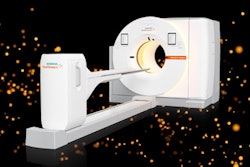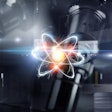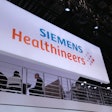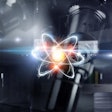Advances in brain PET imaging combined with new treatments for Alzheimer’s disease have given rise to the concept of "neurotheranostics," according to an April 28 presentation at the American Roentgen Ray Society annual meeting in San Diego.
While there are several definitions for theranostics (often referred to as a “see what you treat, treat what you see,” technique), the concept has been applied in oncology to image and treat cancer patients for years, noted Phillip Kuo, MD, PhD, director of theranostics for the City of Hope in Duarte, CA. However, providing a recent new definition, Kuo said the technique translates to brain disease:
“A theranostics system integrates some form of diagnostic testing to determine the presence of a molecular target for which a specific drug is intended,” Kuo said.
 A conceptual framework for neurotheranostics.Phillip Kuo, MD, PhD and ARRS
A conceptual framework for neurotheranostics.Phillip Kuo, MD, PhD and ARRS
In Alzheimer’s disease, that “diagnostic testing” refers to amyloid and tau PET imaging, and the “specific drugs” are two (so far) monoclonal antibodies, lecanemab and donanemab. Several U.S.-approved radiotracers are available for imaging brain deposits of amyloid and tau protein, which are hallmarks of the disease, while the drugs clear amyloid deposits from the brain and slow the progression of the disease.
“The era of neurotheranostics has already begun,” Kuo said.
In January, Kuo and colleagues issued new appropriate use criteria (AUC) for amyloid and tau PET scans, with these new developments in mind. Interestingly, Kuo said that the group began developing the guidelines prior to the drugs reaching the market, and quickly pivoted to include scenarios that for the drugs after their approval.
“The goal of these updated AUC is to assist clinicians in identifying clinical scenarios in which amyloid or tau PET may be useful for guiding the diagnosis and management of patients who have or are at risk for cognitive decline,” Kuo said.
For amyloid PET, seven scenarios are deemed appropriate, two are deemed uncertain, and eight are deemed to be rarely appropriate. For tau PET, the group included five scenarios as appropriate, six as uncertain, and six as rarely appropriate.
Notably, one of the appropriate scenarios for amyloid PET scans in patients with mild cognitive impairment is to determine their eligibility for treatment with the new drugs and to monitor responses among patients who are receiving them.
Challenges ahead include finding the appropriate timing of amyloid and tau scans, as these proteins accumulate in the brain in a “cascade” – amyloid deposits precede symptom onset by decades, while tau is the actual driver of neurodegeneration and cognitive decline.
The goal is to prevent Alzheimer's disease by identifying high-risk subjects and removing the amyloid from the brain before tau develops. But, Kuo asked, if such patients convert back to amyloid negative, will they then not go on to accumulate tau?
“Can we stop the cascade? That is being tested right now,” he said.
Ultimately, these are early, promising days in neurotheranostics, Kuo noted.
“We’re really migrating towards the assessment of neurodegenerative disease pathology in the way we’ve been doing for cancer for a long, long time, and that’s why we’re now talking about theranostics in neurodegenerative diseases,” Kuo said.




















